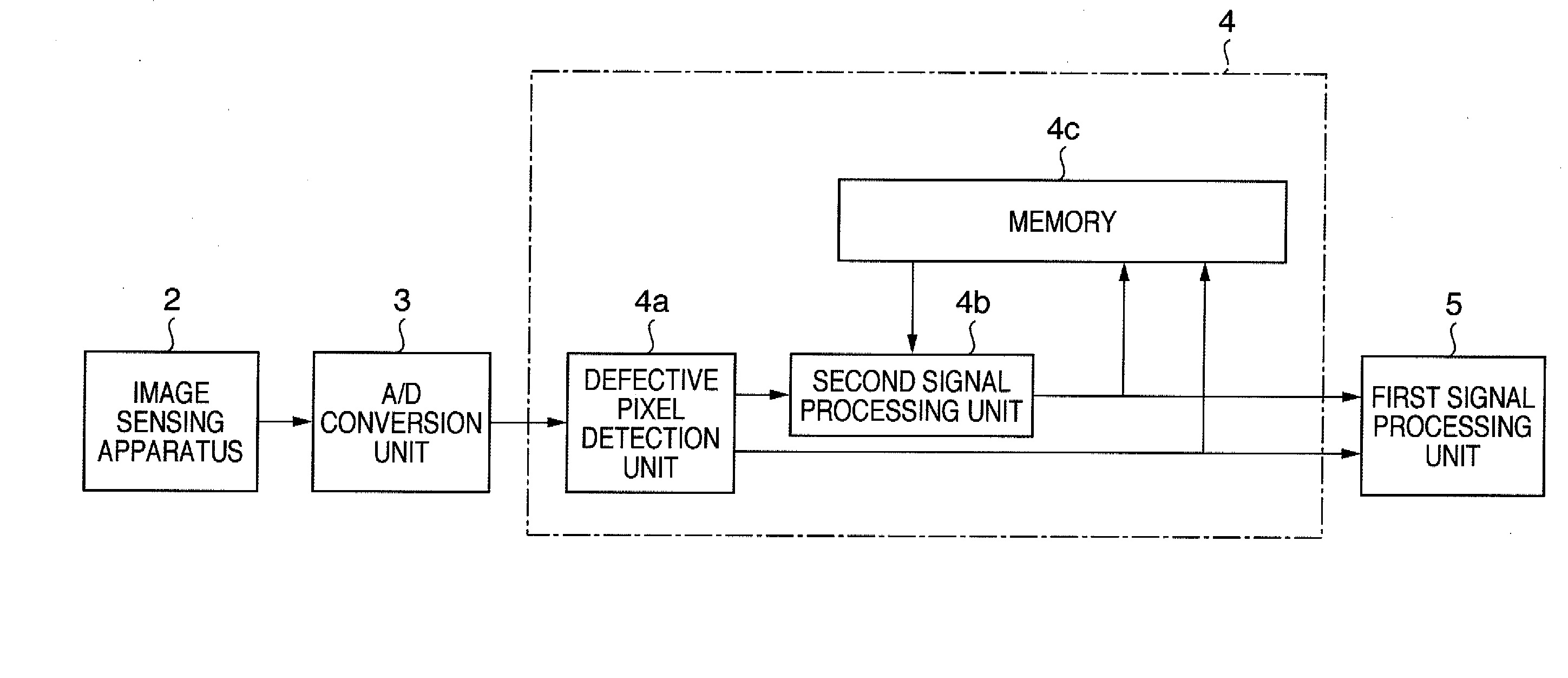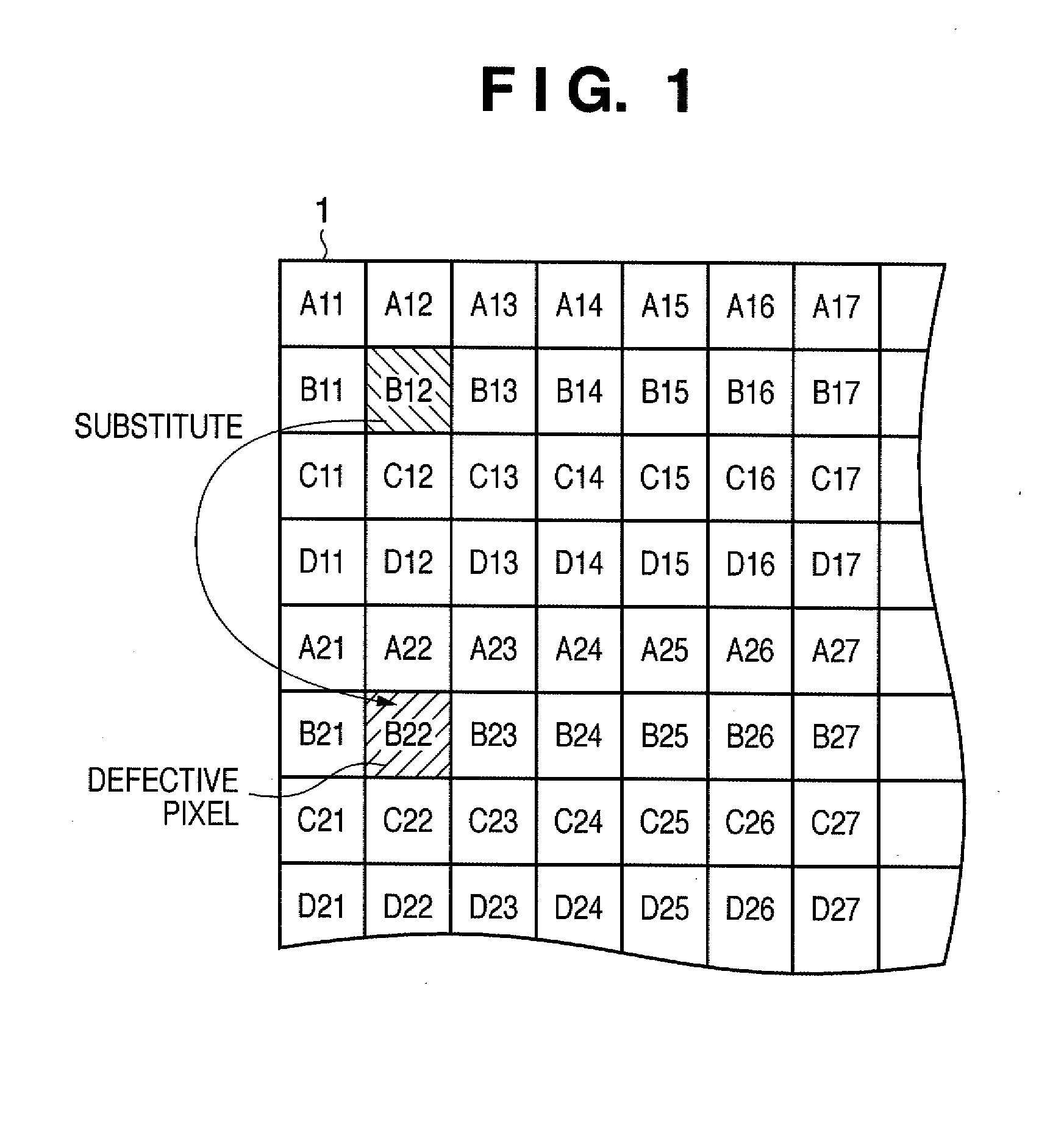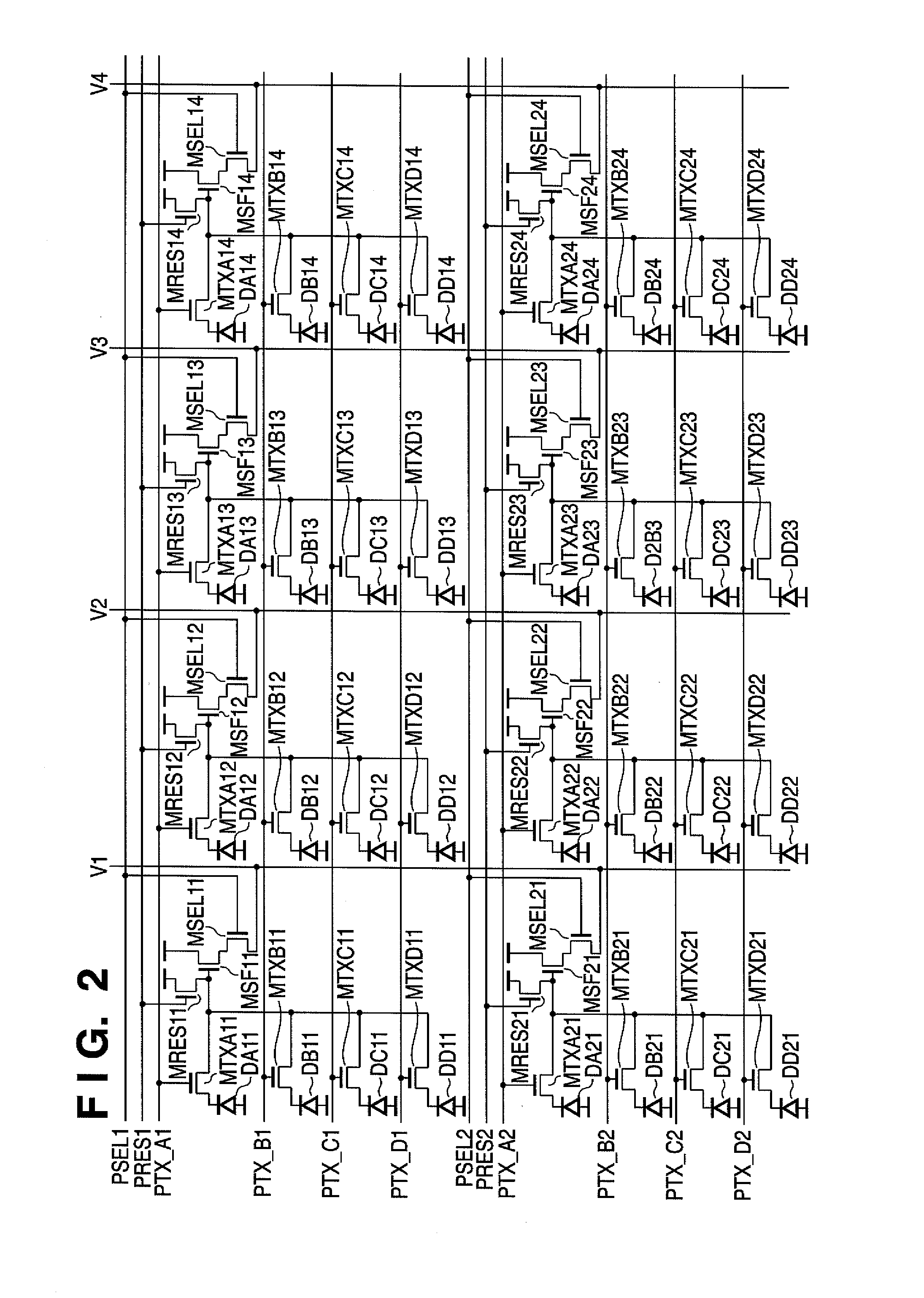Image capturing system, signal processing circuit, and signal processing method
a technology of image capturing and signal processing, applied in the direction of color signal processing circuits, television systems, color television details, etc., can solve problems such as the inability to appropriately correct signals
- Summary
- Abstract
- Description
- Claims
- Application Information
AI Technical Summary
Benefits of technology
Problems solved by technology
Method used
Image
Examples
working example 1
[0060]In this example, four transfer gates share an amplifying element. The potential of the gate of an amplification transistor functioning as a common amplifying element is changed on the basis of charges from the four transfer gates.
[0061]In this example, a plurality of transfer transistors (including transfer gates) share a reset transistor and a pixel selection transistor. FIG. 2 is an equivalent circuit. FIG. 3 is a view showing the pixel layout. FIG. 4 is a sectional view taken along a line X-X′ in FIG. 3. These drawings illustrate only specific pixels. However, a number of pixels may be arranged in the row and column directions.
[0062]The circuit arrangement of the upper left pixel block (A11 to D11 shown in FIG. 1) will be described with reference to FIG. 2. The remaining pixel blocks have the same circuit arrangement as that of the upper left pixel block.
[0063]Photodiodes DA11 to DD11 have the same arrangement as that of a photoelectric conversion element in an effective ar...
working example 2
[0088]In this example, a signal correction method related to an optical black pixel for outputting a black reference signal (dark reference signal) will be described. FIG. 8 shows the pixel layout of an image sensing apparatus.
[0089]Referring to FIG. 8, reference numeral 1 denotes a pixel; 10, a first OB region (vertical OB region); 11, a second OB region (horizontal OB region); and 12, an effective area adjacent to the optical black regions 10 and 11. A dark current is corrected by generating a black reference signal using these OB regions. When a dark signal distribution (vertical shading) generated by the influence of a dark current exists in the vertical direction, the shading can be reduced by executing correction using signals from the horizontal OB region 11. When a dark signal distribution (horizontal shading) generated by the influence of a dark current exists in the horizontal direction, correction can be done using signals from the vertical OB region 10.
[0090]FIG. 9 is a ...
working example 3
[0093]This example is related to a signal correction method when a pixel defect is generated in a vertical OB region 10. This example can also use the block diagram of the image sensing apparatus in FIG. 9.
[0094]FIG. 11 is an enlarged view of the vertical OB region 10. The same arrangement as in Working Example 1 is usable as a pixel layout, as in Working Example 2.
[0095]In Working Example 3, a pixel row is further divided into a plurality of regions (block 1, block 2, . . . ) in the horizontal direction. The signals from a plurality of pixels in each region are averaged and recorded in a memory. Simultaneously, pieces of address information representing the pixel row and the divided regions are recorded.
[0096]An averaging processing unit 4d in FIG. 9 adds the signals from a plurality of pixels in each region divided in the horizontal direction, calculates the average value, and records it in a memory 4c together with address information. The memory 4c records the average signal of ...
PUM
 Login to View More
Login to View More Abstract
Description
Claims
Application Information
 Login to View More
Login to View More - R&D
- Intellectual Property
- Life Sciences
- Materials
- Tech Scout
- Unparalleled Data Quality
- Higher Quality Content
- 60% Fewer Hallucinations
Browse by: Latest US Patents, China's latest patents, Technical Efficacy Thesaurus, Application Domain, Technology Topic, Popular Technical Reports.
© 2025 PatSnap. All rights reserved.Legal|Privacy policy|Modern Slavery Act Transparency Statement|Sitemap|About US| Contact US: help@patsnap.com



